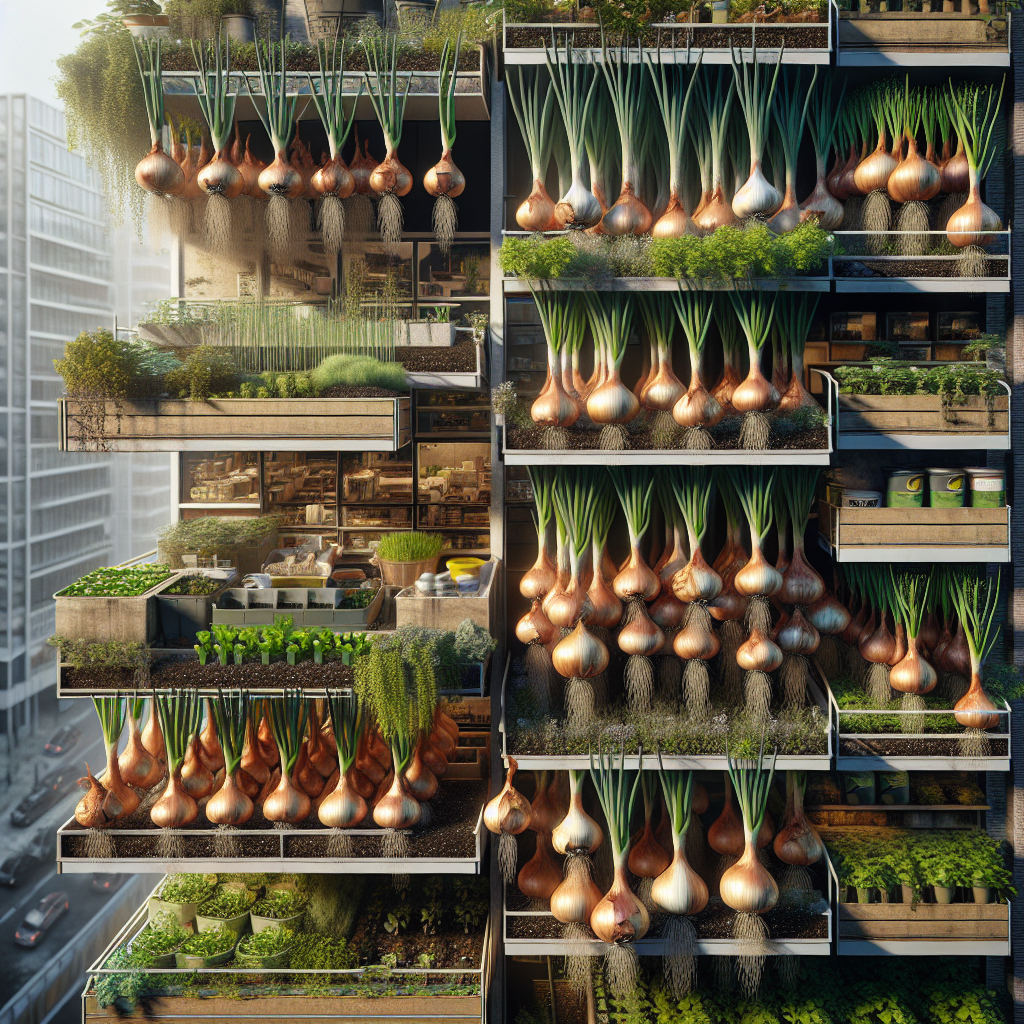Onions are a versatile and essential ingredient in many dishes, adding flavor and depth to a variety of cuisines. Whether you’re a seasoned gardener or new to growing your own produce, cultivating onions can be a rewarding and relatively simple task, even in limited space. With the right guidance and techniques, you can successfully grow healthy and flavorful onions right at home.
Here are some expert tips on how to cultivate onions successfully in limited space:
1. Choose the right varieties: When selecting onion varieties to grow in limited space, it’s important to choose those that are well-suited for small gardens or containers. Look for compact varieties such as ‘Purplette,’ ‘Red Baron,’ or ‘Evergreen Bunching’ onions that don’t require a lot of space to thrive.
2. Prepare the soil: Onions prefer well-draining soil with plenty of organic matter. Before planting, amend your soil with compost or aged manure to improve fertility and drainage. Avoid planting onions in heavy clay soil, as this can lead to rotting bulbs.
3. Plant at the right time: Onions are best planted in early spring or late fall, depending on your climate zone. Plant onion sets or seedlings about 1 inch deep and 4-6 inches apart in rows spaced 12-18 inches apart. If planting from seed, start seeds indoors 6-8 weeks before your last frost date.
4. Provide adequate sunlight: Onions require full sun to thrive, so choose a location in your garden that receives at least 6-8 hours of direct sunlight per day. If growing onions in containers, place them in a sunny spot on your deck or patio.
5. Water consistently: Onions have shallow roots that require consistent moisture throughout the growing season. Water your onions regularly, especially during hot weather or dry spells. Avoid overwatering, as this can cause bulbs to rot.
6. Fertilize appropriately: Onions are heavy feeders that benefit from regular fertilization throughout the growing season. Use a balanced fertilizer high in nitrogen every 2-3 weeks until bulbs begin to form.
7. Control pests and diseases: Keep an eye out for common onion pests such as onion thrips, onion maggots, and aphids. To deter pests, consider companion planting with herbs like mint or rosemary that repel insects naturally. Rotate crops annually to prevent the buildup of soil-borne diseases.
8.Train vining types onto structures:this is especially useful for gardeners with limited space since you can maximize vertical growing areas instead of horizontal spaces
9.Developing A Regular Watering Schedule
It’s important for onions growing indoors (or outdoors) that they receive consistent care when it comes to their moisture levels—especially during dry seasons (weeks without rain). While there is no definitive number-of-times watering schedule set-in-stone for gardeners tending-to these plants (since different factors come-into play), most experts will recommend providing them with water around once-per-week—ideally allowing them enough hydration without drowning their root systems
10 Protect from extreme temperatures:
Onions do best when grown between temperatures of 13°C -24°C so be sure keep them away from cold drafts of air,but still provide enough air flow otherwise,onions could easily start rotting
11 Harvesting Your Crop
When it comes time for harvesting after approximately after four-six months,you’ll know it’s time by noticing their leaves starting-to wither away & turn brown/yellow;this signals they’re ready-to picked! Pulling up firm healthy looking bulbs rather than ones with wet/mushy spots is key;if any onions look like they’re starting-to spoil remove them immediately before they spread disease further into other plants
12 Proper Storage methods
It’s crucial store harvested crops properly&differently depending-on whether its whole-bulb,onion slices,diced-up pieces etc.NOT storing these properly &they’ll quickly dry out/rot which shortens shelf life but if stored correctly could last several-months available fresh usage
13 Root maintenance
Since root rot is such common issue among inexperienced growers,,it’s worth checking any signs indicating possible infection after harvesting crop by inspecting root systems carefully;if need be trim any black/blue sections off before reusing same container potting-mix again later down road (&also using appropriate fungicide control)
14 Fungicide application
While using fungicides shouldn’t be primary method-of defense against root rot,pathogens,molds etc.,its important-give layer protection against future infections after having already struggled keeping plants safe so far;only using certain types-fungicides approved safe effective use veggie gardens helps maintain healthiest conditions possible when trying bring back the crop from brink
15 Compost matter reincorporation
After all hard work put into cultivation its only natural see some breakage along stems/leaves but don’t worry because broken-off parts decompose back into potting mixture over-time giving extra nutrients future growth cycles;this way nothing goes wasted while maintaining optimal conditions plant growth moving forward
In conclusion,don’t let limited space deter you from growing delicious & nutritious onions at home.just make sure follow expert advice establish good foundation getting started then take care necessary steps protect assets manage crop effectively through harvest phase until it’s used consumed entirely!By doing this guarantee outcomes always exceed expectations every season comes around again!













